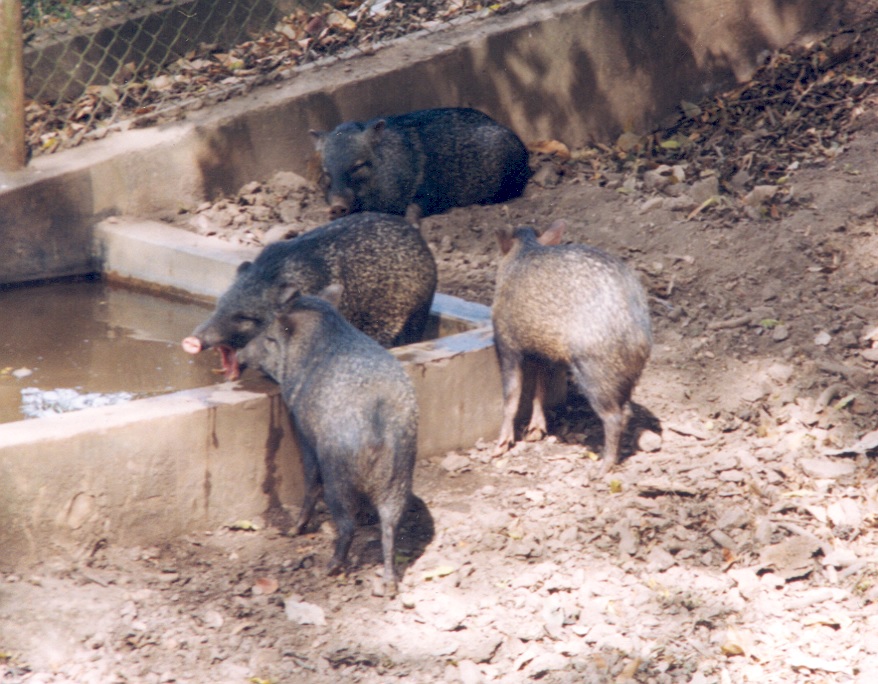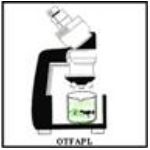Topics Covered in this Section
14.14 Summary of Alternative Solutions
14.14.1 A Suggested Strategy for Wildlife Utilization in Latin America
14.14.2 A Suggested Strategy for Trinidad And Tobago [A Small Island State]
1. Enforcement of the Land Use Zoning Laws
2. Enforcement of the Wildlife Conservation Laws with increased penalties
5. Education of the Population
6. Establishment of Captive Breeding Centres/ the Empowering of Farmers
14.14.3 The Strategy for Wildlife Conservation in French Guyana
AGLS 6502 Lecture 14.4 - Wildlife Conservation Strategies
14.14 Summary of Alternative Solutions
In an effort to halt the decline of the wildlife population, several solutions are being suggested.
14.14.1 A Suggested Strategy for Wildlife Utilization in Latin America
Ojasti (199?) working in Venezuela has proposed wildlife management strategies for Latin America [of which most are the Neo-tropics] and the elements of this strategy are as follows:
- Total protection
- Protected areas
- Sport hunting
- Captive breeding
- Extensive management of commercial species
- Environmental education
- Research
- Wildlife protection services
- Other strategies.
14.14.2 A Suggested Strategy for Trinidad And Tobago [A Small Island State]
The Strategy we are suggesting for the Peccary for Trinidad and Tobago which is a small island state contains the following elements:
1. Enforcement of the Land Use Zoning Laws.
2. Enforcement of the Wildlife Conservation Laws with increased penalties.
3. Enactment of new Pollution laws.
4. Establishment of Wildlife Emergency Relief Centres.
5. Education of the population, and
6. Establishment of Captive Breeding Centres/ the Empowering of Farmers to produce wildlife and in particular, the Peccary and other desirable wildlife species.
1] Enforcement of the Land Use Zoning Laws
There are enacted laws that have prescribed land use in order to preserve the natural habitat of many species of wildlife. These laws have not always been enforced. Unless the situation changes land use zoning will continue to be problematic and not be of any real benefit to conservation.
2] Enforcement of Wildlife Conservation Laws
In some small island states there is incorporated into the wildlife laws protection for all wildlife against hunting. In Trinidad and Tobago the Peccary needs special attention because of its threatened status. The enforcement of these laws is weak, while the monetary rewards after breaking these laws are high and the law enforcers have become customers and consumers of the lawbreakers.
The need for higher monetary penalties accompanied by long terms of penal punishment, for both the lawbreakers and guilty law enforcement officers, may deter them from continuing the trade. This however may be combated by the demand for Agouti meat by all levels of society.
3] Enactment of New Pollution Laws
The enactment of new pollution laws with an emphasis on industrial disposal of waste, is critically needed in many countries. Excessive penalties, including permanent closure of the industry would be introduced to deter the indiscriminate dumping of effluent into water sources. Additionally, the burning of waste that causes air pollution would be included in these laws. However, in the legislative process, there is the human element, which too often is easily compromised.
4] Establishment of Wildlife Emergency Relief Centres
Wildlife emergency relief centres, once developed, can assist in the protection and rehabilitation of wildlife. These centres would be established in populated areas near to forests to allow the retriever’s easy access. Their services would include a mobile unit to recover wildlife from homes, disaster areas and young, orphaned by hunters. The rehabilitation centre will act as the repository. This solution is costly and the human element poses the threat of compromise.
5] Education of the Population
Public education with special emphasis on hunters, is an existing program, unfortunately this has had minimum impact on the general trends. Ignorance by the status quo of the Peccary and other wildlife species and the monetary gains associated with the wildlife trade has rendered the education of commercial hunters invalid. However this booklet hopes to contribute to this effort.
6] Establishment of Captive Breeding Centres/ the Empowering Farmers to produce Peccary
The establishment of captive breeding centres where young adult male and female animals will be housed, is the recommendation of choice, for several reasons. This was recommended by Hislop (1989), eleven years ago!!!
Firstly, this would lend itself to intensive production. Secondly the centres will provide protection and a healthy environment for reproduction. “Predictable reproduction models will allow correct charting and knowledge of the animal’s cycle.”
Figure 2: Peccary Breeding Colony at the Emperor Valley Zoo in Trinidad and Tobago, W.I..

Because the centres could be housed at stations that are already established and associated with the conservation, protection and reproduction of wildlife, such as the Emperor Valley Zoo and the OTF-APL [in Trinidad and Tobago], trained staff will be available to address medical and behavioral concerns.
This is the role in conservation approach which zoos could take. These centres will also act as relief centres for orphaned and traumatized animals, so rehabilitation and restoration of the animals can be handled in a proper manner with security measures already in existence. This type of facility will ensure that the threat of human compromise is avoided through the existing security measures at the Zoo.
Additionally private persons and farmers could be encouraged to produce and manage the Agouti commercially, thereby decreasing the dependence on the wild. Figure 1 shows that some farmers are already doing so. The establishment of the first captive breeding centre could be constructed under the umbrella of The OTF-APL and a Zoo. This could become the blueprint for the other centres throughout the country where State institutions exist. This will provide the animals with professional health care by trained staff and security from attack by hunters through the security mechanisms, already established at the Zoo.
References:
Hislop (1997)
C.G.C. Rawlins, “Zoos and Conservation: The Last 20 Years.” Advances in Animal Conservation. (London: Zoological Society of London, 1984) 83.
14.14.3 The Strategy for Wildlife Conservation in French Guyana
In French Guyana hunting is allowed year round, but animals are categorized into three categories with the following constraints:
- Animals which are Red listed and cannot be hunted, these are the Fully Protected Species;
- Animals which can be hunted but for personal use only/ not to be traded, Hunting permitted but not for trade and
- Animals which can be hunted and traded, (Richard-Hansen and Hansen, 2002).
Eight (8) species of mammals can be hunted and traded locally and they are:
- Collared Peccary [Tayassu tajacu]
- White Lipped Peccary [Tayassu pecari]
- Tapir [Tapirus terrestris]
- Paca [Agouti paca]
- Agouti [Dasyprocta leporina]
- Capybara [Hydrochaeris hydrochaeris]
- Nine Banded Amadillo [Dasypus novemcinctus]
- Amadillo [Dasypus kappleri]
The above species has been reported to account for 73% of all mammalian catch from a study on animal biomass harvested in the Brazalian Amazonia. The Collared Peccary accounted for 18.3%, and this was equivalent to 27,065 tonnes harvested annually by the low-income rural population.
